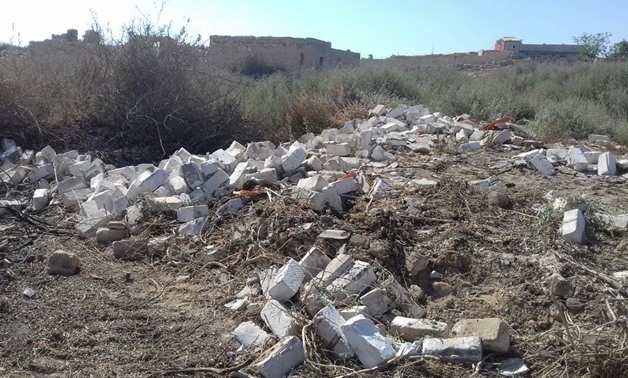https://www.egypttoday.com/Article/4/51408/Restorating-an-archaeological-area-in-Alexandria
 Abu Mina Archeological area - Egypt Today/Jaqueline Munir.
Abu Mina Archeological area - Egypt Today/Jaqueline Munir. Restorating an archaeological area in Alexandria
Sat, Jun. 2, 2018
CAIRO- 2 June - 2018: New developments in Alexandria are mentioned in the rescuing mission file of Abu Mina archaeological area, which is located west of Alexandria, and is the only Coptic area in Egypt, listed on the World Heritage List since 1979, and the list of The Endangered Heritage in 2001. Extensive actions have begun from the Ministry of Antiquities to work quickly on the implementation of the plan to save the archaeological area and suction of the groundwater, which threatens the destruction of the area.
General Manager of Alexandria Antiquities and the northern coast of the Islamic, Coptic and Jewish monuments, Mohamed Metwally said that the ministry is in the process of importing 170 water pumps in two months suitable for international standards.
He pointed out in special remarks to Egypt Today that Alexandria Antiques authorities ended the review of all procedures for the implementation of the project, where the electricity and water networks were reviewed and the line of water pumping and dumping in the canal and then to the public bank. Authorities in Alexandria coordinated with the security forces to remove all infringements on the Abu Mina archaeological area which exceeded 98 percent of the land.
Metwally assured that UNESCO has expressed their great satisfaction with the measures taken by the Egyptian Ministry of Antiquities to save the archaeological area from drowning and promised to remove it from the red list after the water suction. A delegation of international experts in the field of water, irrigation, archeology, culture and arts from UNESCO and FAO organizations recently visited the Abu Mina area in Alexandria to examine the current status of the site. UNESCO's Cultural Program Officer, expressed her great satisfaction with the efforts exerted by the Ministry to protect the site and prevent it from any danger.
On the re-opening of the archaeological area, Metwally said that the re-opening will need developing an integrated plan and coordination with many bodies, not just the Ministry, explaining that the matter is currently being studied, but no date has been issued yet. More work needs to be done. Restoration of the Holy Sepulcher of St. Mina and the archaeological churches that were discovered on the site, as well as the construction of fences and security gates around the archaeological area all being studied.
On the other hand, Father Tidaus, an official in the Archaeological Area File of the Monastery of Marmina, noted that the project will be considered again after the removal of the encroachments from the area. The installation of water pumps will be installed from the tomb of St. Marmina, and the restoration of the archaeological area will begin.
He stressed in special remarks to Egypt Today that the ministry took the issue of great interest and is currently coordinating with the Ministries of Agriculture and Irrigation to select the types of crops suitable for the area and irrigation methods to reduce the drainage of water to protect the archaeological area from getting damaged.
Abu Mina is located in the Marriot Desert, west of Alexandria. It includes a collection of Coptic monuments, churches and monasteries, it was once a small village. In the early Middle Ages, it was the most important Christian center in Egypt.
The site was discovered in 1905 by the German archaeologist Kaufman, and in 1907 he was able to discover bigger parts of the site. In 1979, UNESCO committee decided to name this place among the Global Heritage list, due to it becoming one of the important historic locations in Egypt.
The area has been seriously damaged, which resulted in UNESCO adding it to the red list of the most threatened World Heritage areas because of the high rise of groundwater levels. The area suffered a lot of negligence during the circumstances it went through following the revolution of January 2011.
-- Sent from my Linux system.
No comments:
Post a Comment